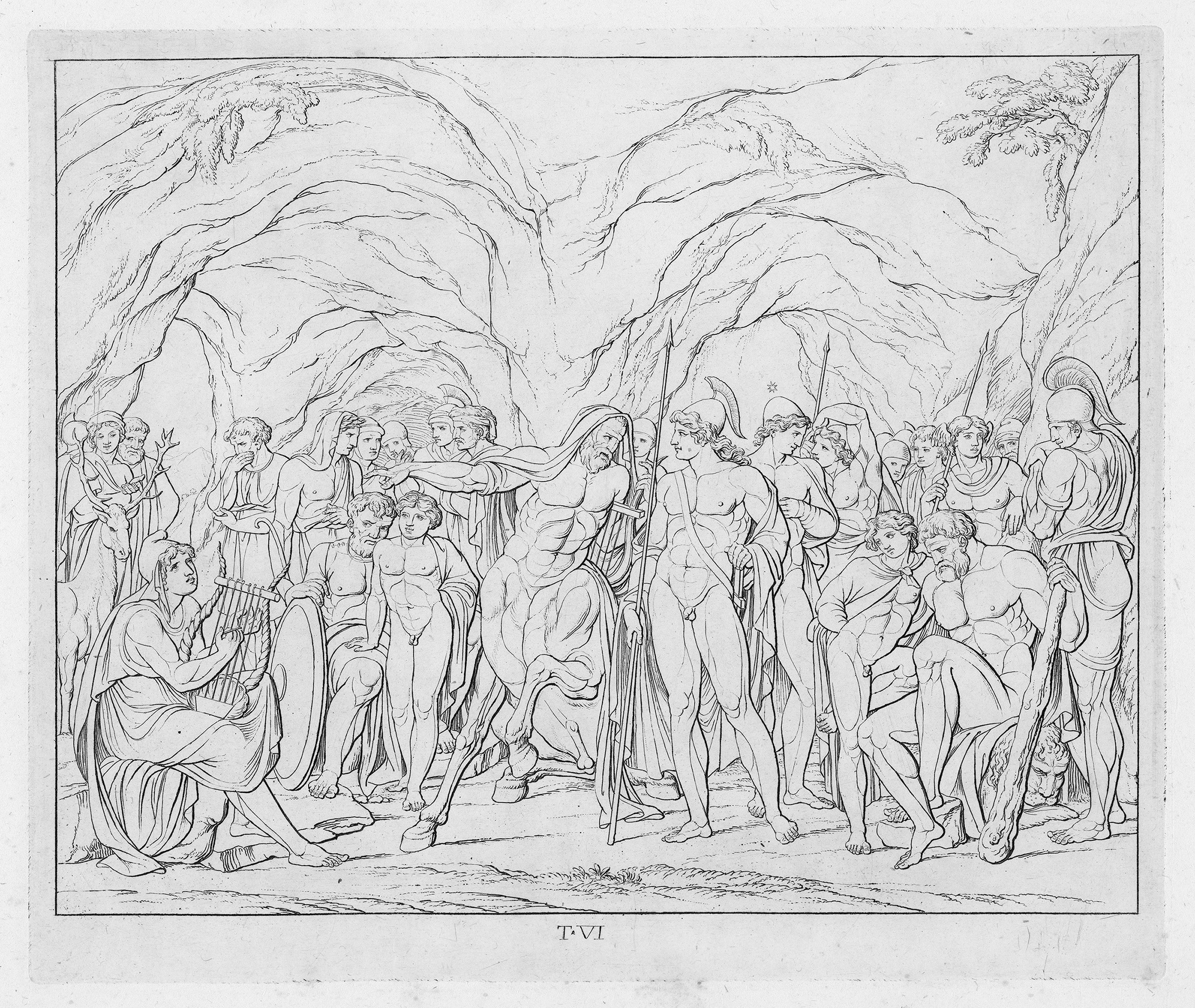Loading the page ...
Joseph Anton Koch
(1768 Obergibeln – 1839 Rome)
Les Argonautes, selon Pindare, Orphée et Apollonius de Rhodes. En vingt-quatre planches. Inventées et dessinées par Asmus Jacques Carstens et gravées par Joseph Koch. Engraved title page with portrait of Carstens, four pages of French text, 24 sheets of outline etchings. Each approx. 21.4 x 25.3 cm (platemark) on 26 x 41.1 cm (sheet size). Bound in half-parchment of the time with parchment corners, marbled sides. 1799. Andresen 29.
In spring 1795, when Joseph Anton Koch arrived in Rome, Asmus Jakob Carstens had just opened an exhibition of his works there in the former studio of Pompeo Batoni. This experience was to have a decisive influence on Koch’s development as an artist. Carstens showed mainly large-format, drawn compositions on ancient themes, whose powerful stylization must have seemed to Koch to be the perfect embodiment of Winckelmann’s artistic ideals. Koch studied under Carstens until the latter’s death in 1798, acquiring a Neoclassical style characterized by clear, strong lines and an austere monumentality of composition.
Carstens, who all his life remained an obstinate outsider and systematically shunned the academic art world, lived in Rome under very dire conditions. Shortly before his death he produced the illustrations for the legend of the Argonauts, which were intended as originals for engravings. Koch took charge of the realization of this project, not least as a homage to his recently deceased friend and teacher, and also assumed responsibility for the sale of the series of engravings. There were probably three editions in all. In the first edition the title page bears the republican date “An VII”. The present, second – and contemporaneous – edition shows the year 1799 in Roman numerals; the third, later edition was published by the Roman publisher Tommaso Piroli, to whom Koch had sold the plates at some time between 1807 and 1810 (see A. Griffiths, F. Carey, German Printmaking in the Age of Goethe, London 1994, p. 152).
The present work, dating from Koch’s early years in Rome, is impressive for its systematic adoption of Neo-classical forms. The power of the pure line and the firm outlining of the individual form, which is reminiscent of Flaxman, create a memorable, stoic mood. In several cases, however, Carstens’ original drawings were modified by Koch, who added landscape backgrounds which have the effect of softening the severe purism of the originals. In taking artistic liberties with the original and presenting his own view of nature Koch goes beyond Carstens’ model. In the decade after 1800 Joseph Anton Koch was to develop into a celebrated landscape artist, becoming a beacon and mentor for the following generation of Nazarenes in Rome.
Superb, clear and sharp impressions, printed with a delicate veil of tone; with full margins. Minimal ageing, otherwise in perfect condition. Rare in this printing quality.
